Sometimes a recipe starts with a particular finished dish in mind, but more often than not it starts with a lone ingredient. An ingredient I’ve read about and must try, an ingredient I discovered at the farmers’ market or dining out. And, sometimes, an ingredient that simply finds me; such was the case with black chickpeas (ceci neri, in Italian), which form the base of this satisfying lamb stew.
While in Sicily last year, my husband and I spent some time driving around the seven hamlets of the municipality of Castiglione di Sicilia — in the foothills of Mt. Etna — in the province of Catania. We stopped in the tiny village of Solicchiata in search of a snack and stumbled upon a tiny gem of a store, Aromi E Sapori di Angela Savoca. It was stocked from floor to ceiling with a tempting array of local salumi and cured meat, cheese, wine, nuts, olives, bread, and various specialty products. We bought some cheese and nuts, and that’s when I noticed the black chickpeas. I briefly debated whether to buy them, as I already had enough foodstuffs to fill my one suitcase. But what the heck, what’s one more item in the name of cooking.
Compared to the (white) chickpea that we know, the black variety has a dark, rough outer skin and is much smaller in size. The black chickpea is also richer in fiber (about three times) and is high in iron. Because of its thick skin, black chickpeas need to soak and cook for a longer period of time than do their white counterparts, which may explain why they never gained much popularity. When cooked for a long period of time, black chickpeas maintain more of their structural integrity, in contrast to the white variety, which tends to get mushy. The black variety also has a more earthy, herbaceous flavor profile.
I’ve read that the majority of black chickpeas are grown in the Murgia, a quadrangular karst plateau (a landscape formed from the dissolution of soluble rocks and characterized by underground drainage systems with sinkholes and caves), located in central Puglia, in particular in an area located southeast of Bari known as Murgia carsica. In years past, this territory was a fertile, agricultural haven of vineyards, almonds and olive groves, and other crops, including legumes (and ceci neri) that were well-suited for the terrain. Until the 1950s, black chickpeas were commonly consumed, but their cultivation subsequently dwindled following the introduction of more profitable crops such as olives and grapes. As well, legumes with much shorter cooking times arrived on the market and, thus, the black chickpea lost its appeal.
There is something about old-world ingredients like ceci neri that I find particularly appealing. As our agricultural system becomes less and less biodiverse, rare, heirloom plant varieties, including beans, become an important link to a region’s culinary history and traditions.
An ideal way to utilize black chickpeas is to toss them into a stew. A good stew needs to simmer for several hours to develop flavor, and black chickpeas readily hold up to the long cooking time. By the time the meat is fall-off-the-bone tender, the black chickpeas will have had ample time to cook. In fact, after several hours, they were pleasantly al dente. The other great thing about a stew is that you can (and, in the name of flavor, should) utilize inexpensive, bone-in cuts of meat, including lamb, pork, goat, or beef. I went with lamb, as its stronger, assertive flavor pairs well with the earthy black chickpeas. If you happen have a Parmesan rind on hand, add it to the stew; the rind will lend umami to the dish.
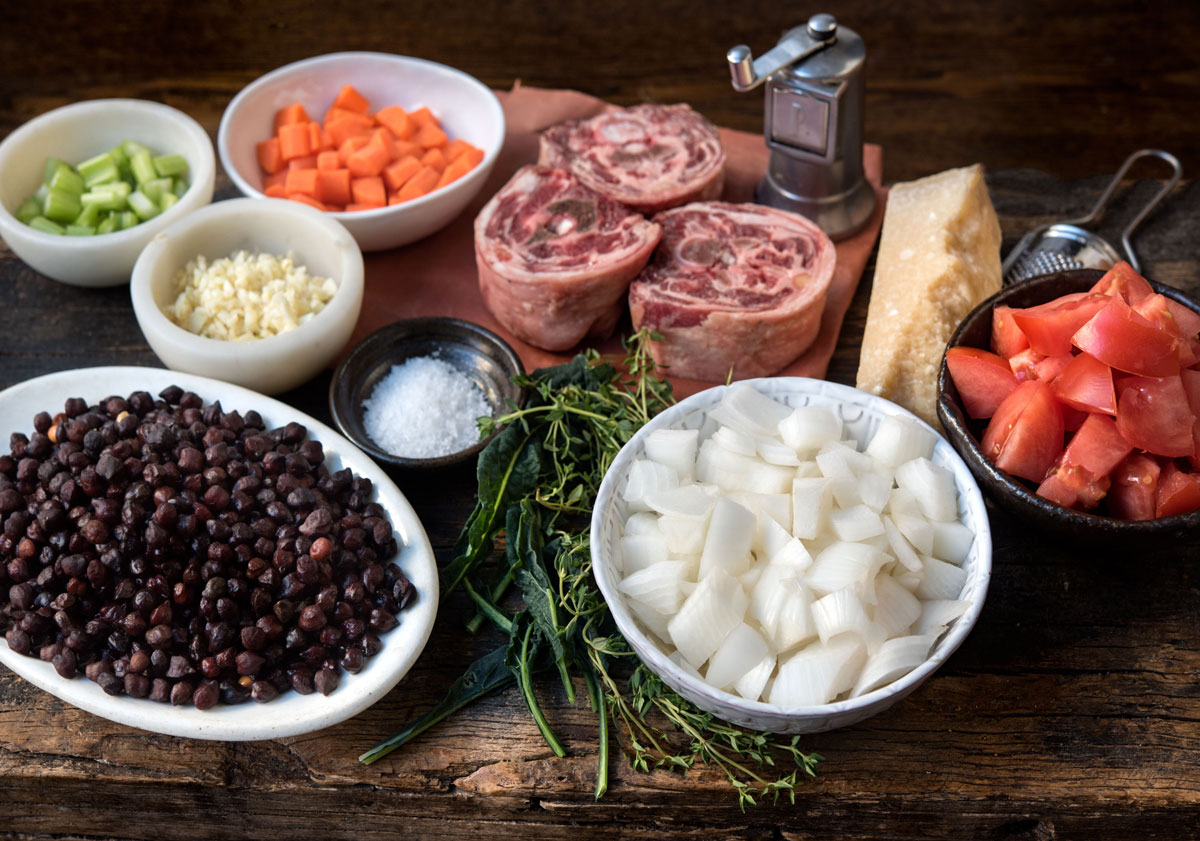
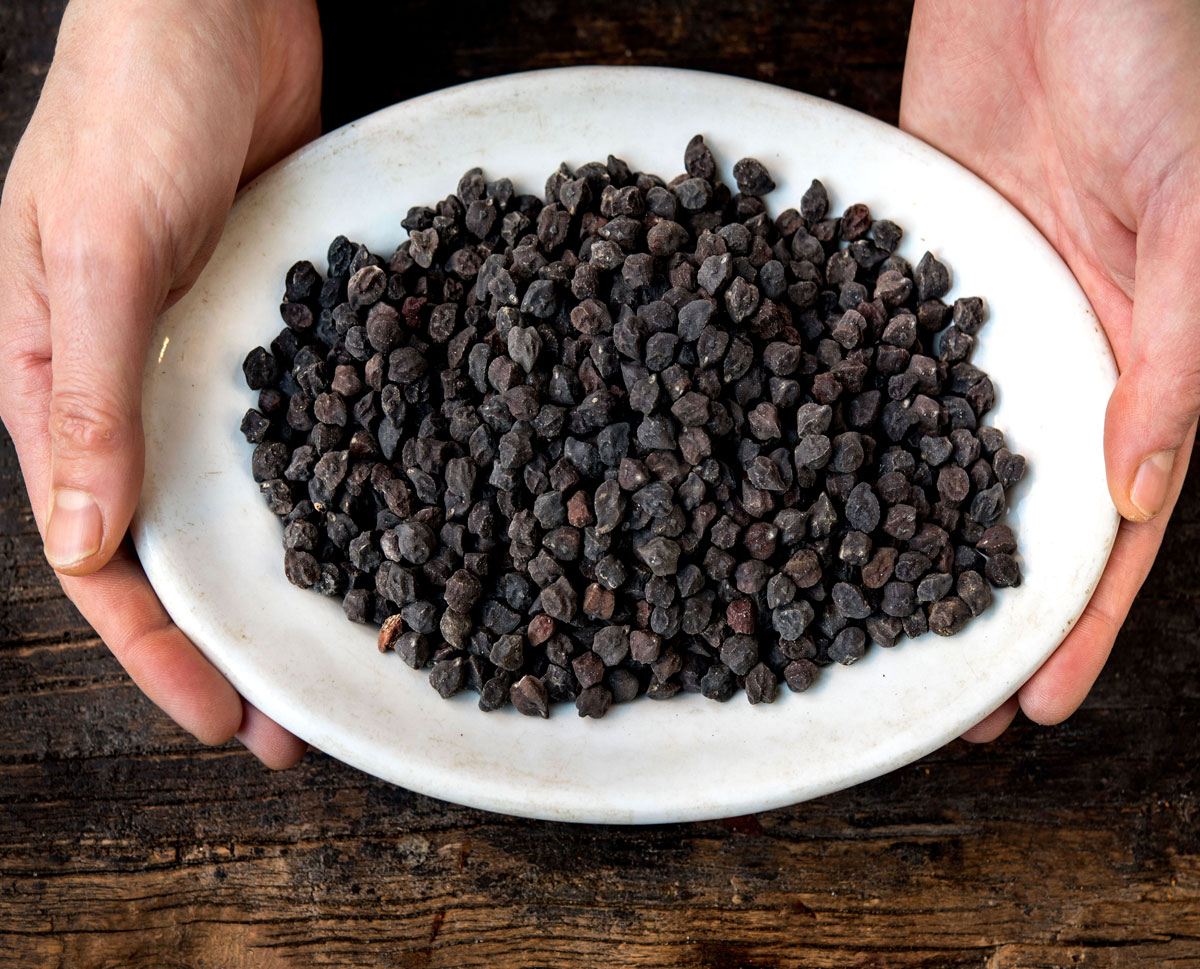
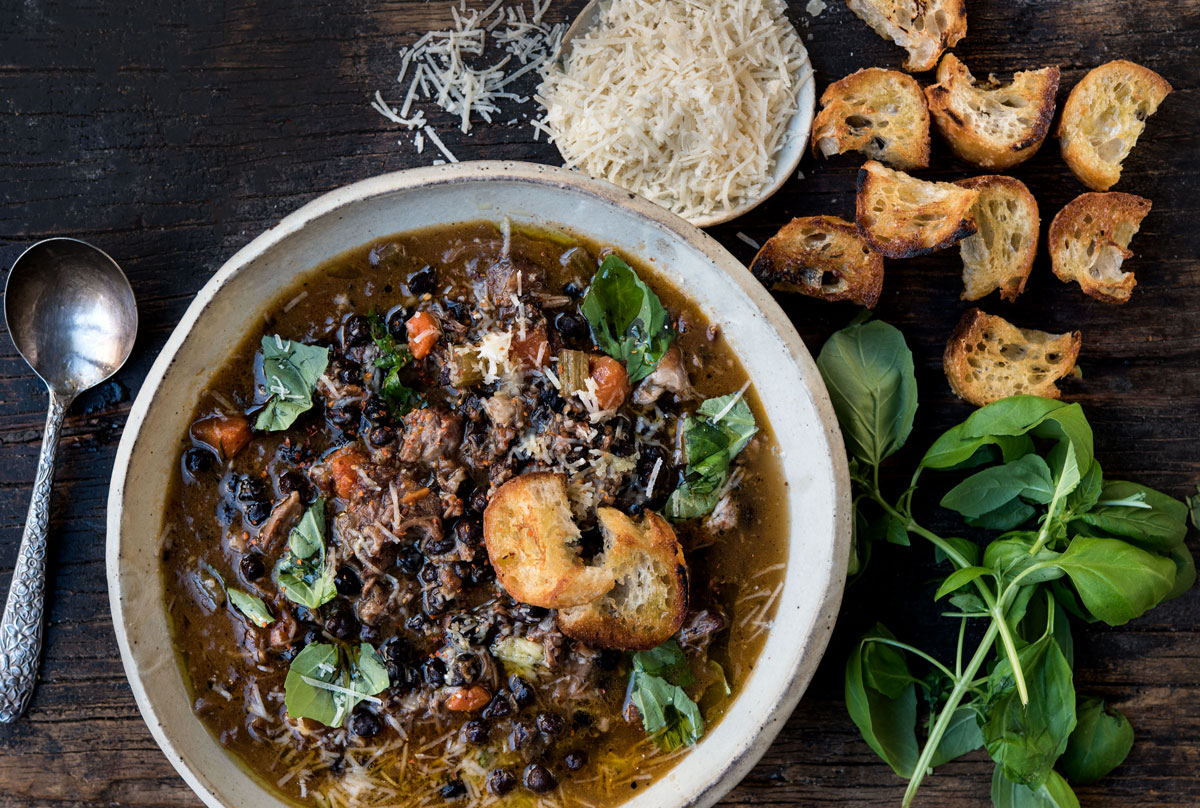
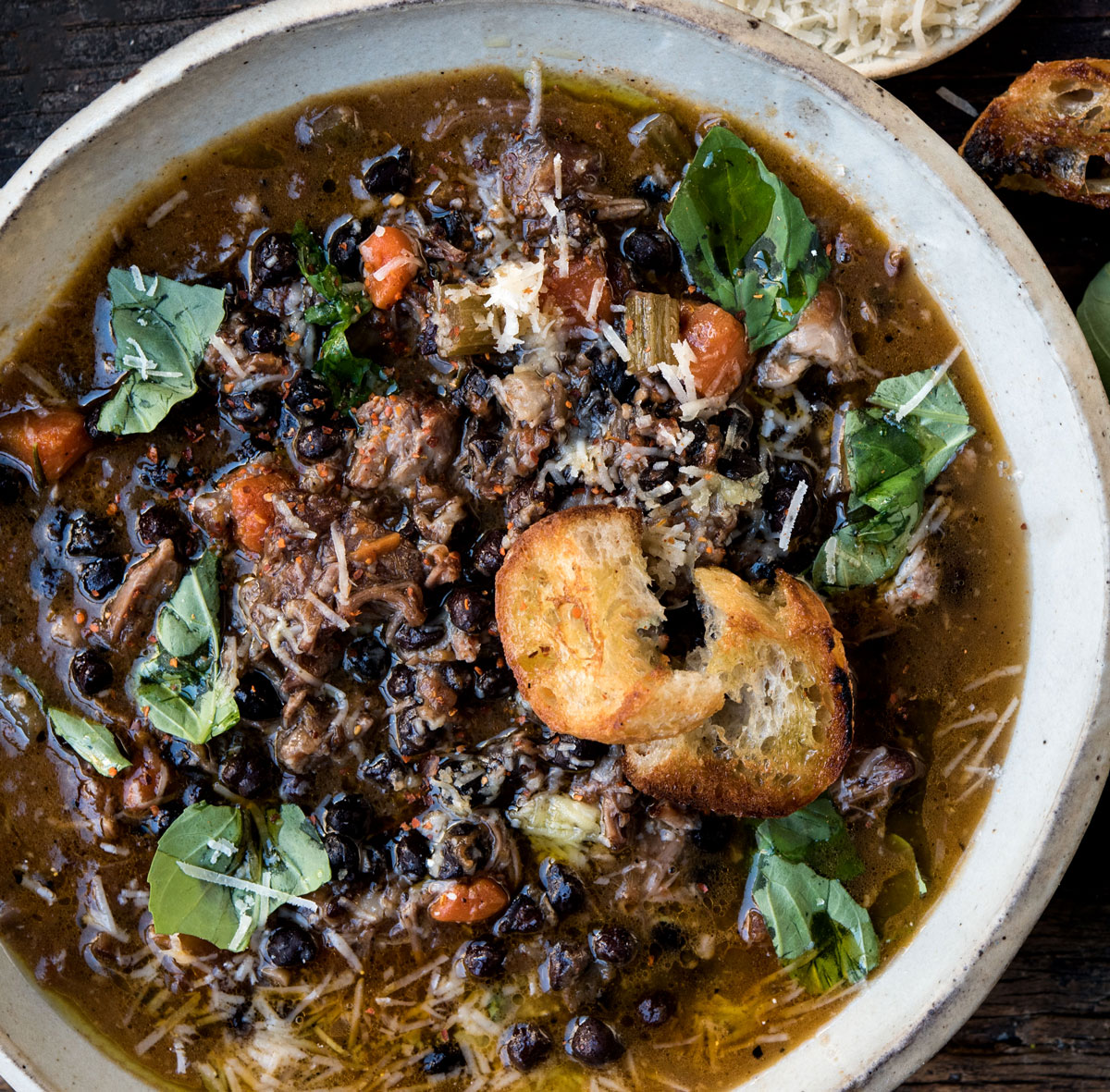
Black Chickpea and Lamb Stew
This is a classic, hearty, comforting stew, with the inclusion of one less common item, black chickpeas or ceci neri. Their earthy, herbaceous flavor and toothsome texture are perfectly suited to the stew.
1 ¼ pounds inexpensive cut of bone-in stewing meat (lamb, pork, goat, beef) such as cross-cut shank, neck, short rib, or chuck
salt and pepper
1 tablespoon olive oil
1 cup dry red wine
1 ½ cups black chickpeas (ceci neri), soaked overnight (like these; I bought them at MOM’s Organic Market)
1 medium onion, roughly chopped
1 medium carrot, peeled, roughly chopped
1 stalk celery, roughly chopped
1 large tomato, roughly chopped
Parmesan rind (optional)
5 cloves of garlic, minced
few sprigs of fresh herbs, such as thyme and/or rosemary
½ cup Parmesan cheese, plus extra for serving
Basil leaves for garnish
Red pepper flakes
Toasted sourdough croutons for serving (I like to rub the toasted bread with a clove of garlic)
Season meat with salt and pepper. Heat a Dutch oven or soup pot over medium-high heat. Add the meat and sear until nicely browned on both sides.
Add the red wine to deglaze. Add the black chickpeas, onion, carrot, celery, tomato, garlic, herbs, and Parmesan rind. Cover with water, about 3 1/2 cups. Bring to a boil, reduce heat, partially cover. Simmer until the meat if fall off the bone tender and black chickpeas have softened, about 3 ½ to 4 hours, giving a stir from time to time, and adding more water as needed. Taste, seasoning with salt and pepper. Pull meat from bone and discard bones.
Add the Parmesan and stir to combine. Ladle into bowls, garnish with basil leaves, extra Parmesan, red pepper flakes, and toasted croutons.
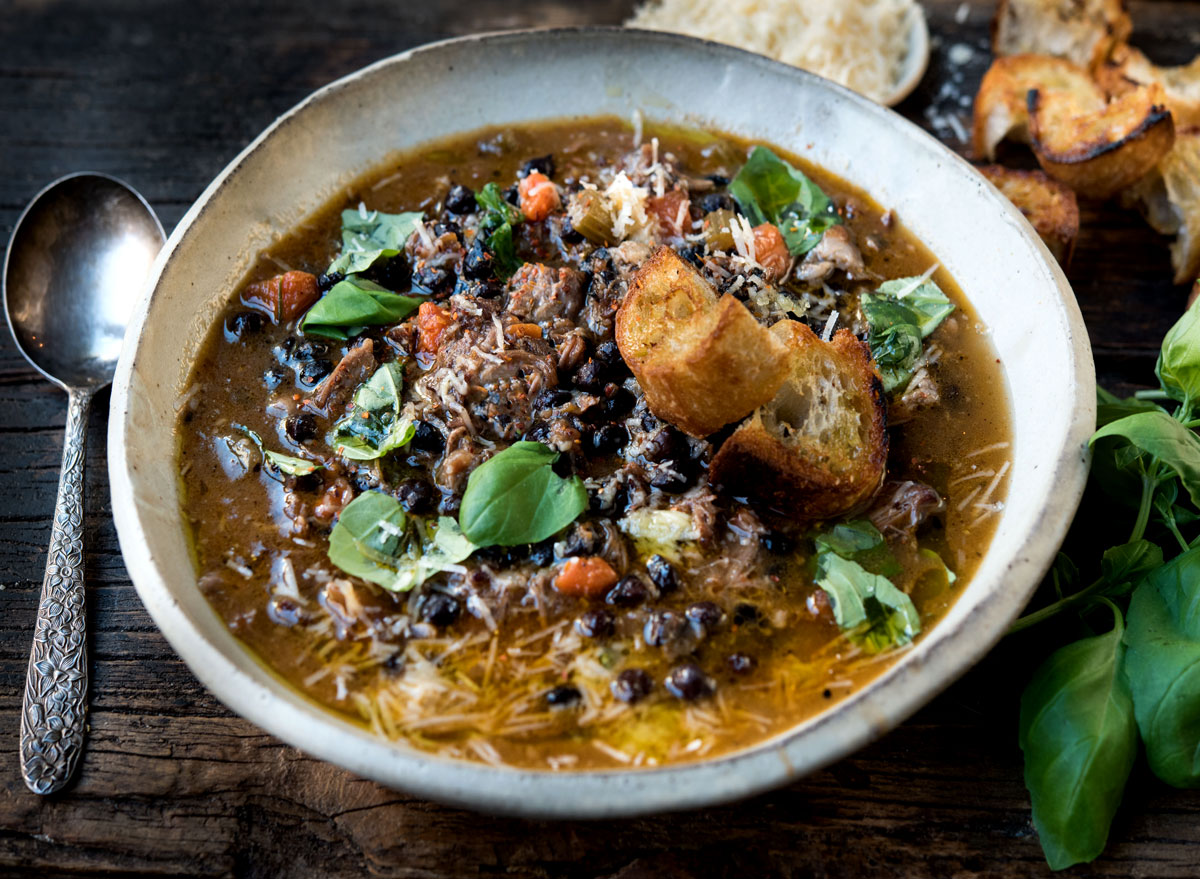
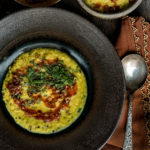
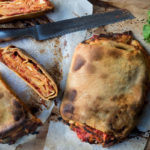
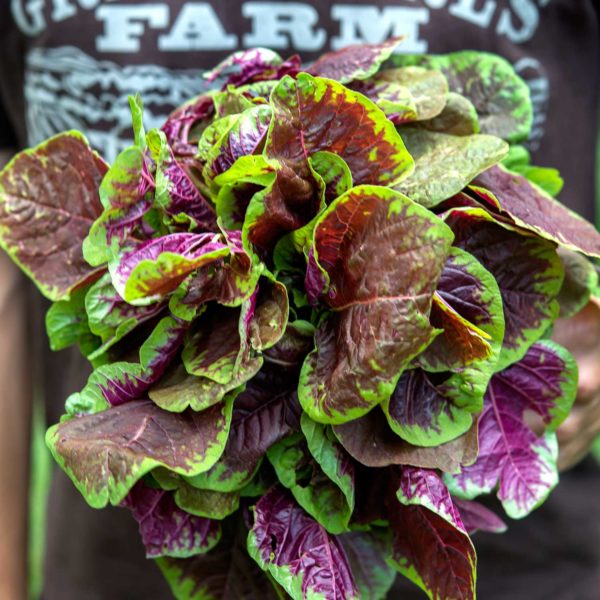
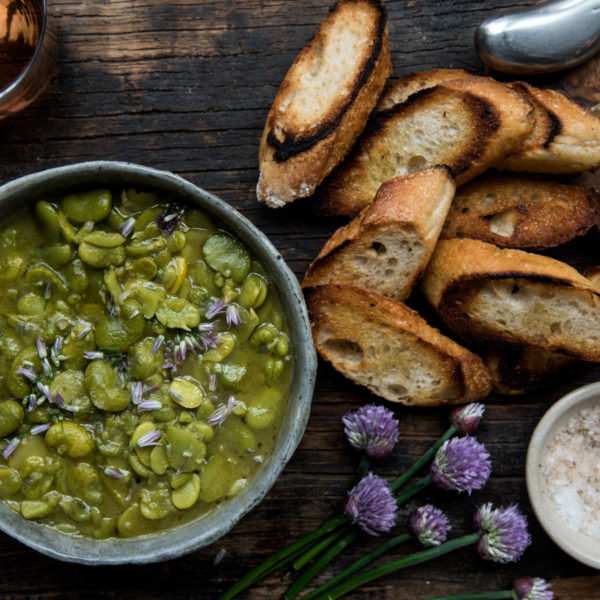
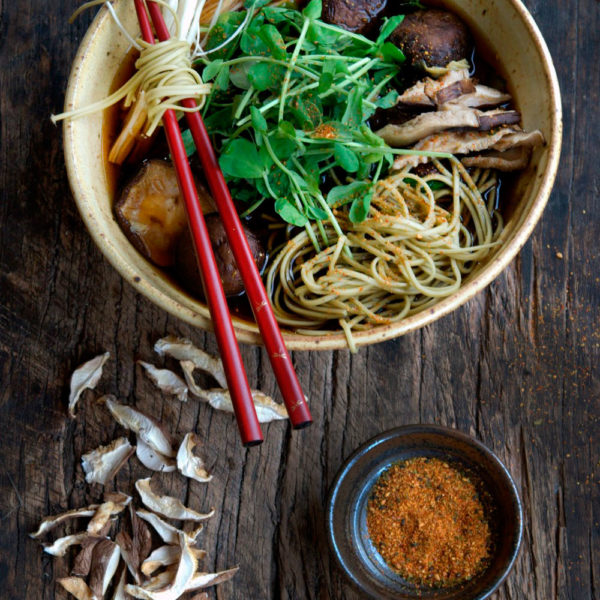


3 comments
stacey snacks
Since I can’t find ceci nero, I will try it with regular ceci beans……looks beautiful, as always.
Lisa
I made this a couple of nights ago. Absolutely delicious! I used a black chickpea variety I found in an Indian grocer. Not nearly as black in colour – more of a dark tan, however, it still had a more earthy flavour and much firmer than white chickpeas. To stretch out left overs the next day, I served it on soft polenta – it worked well.
wildgreensandsardines@gmail.com
Hi Lisa, so glad you enjoyed! I brought the black chickpeas back from Sicily. The Indian variety is probably the closest I’ve seen here in the States.